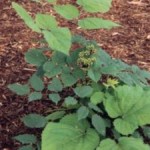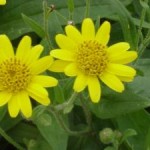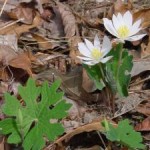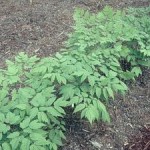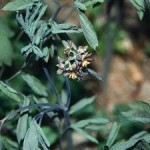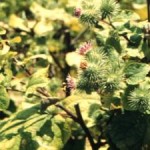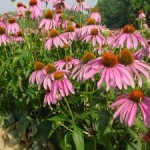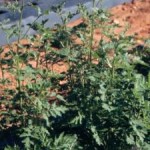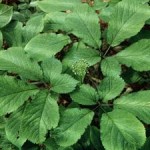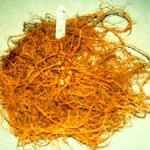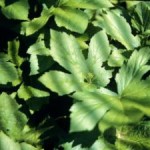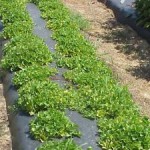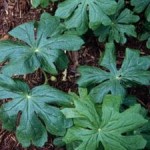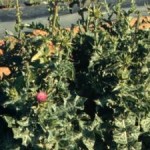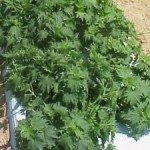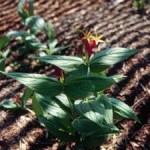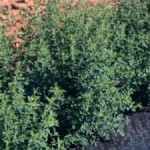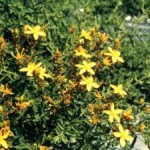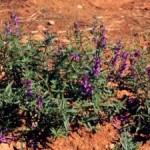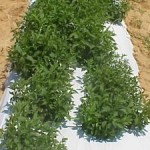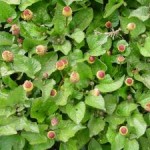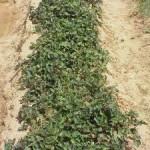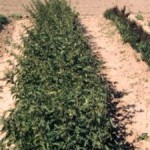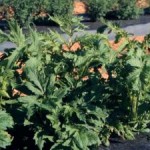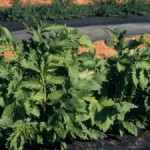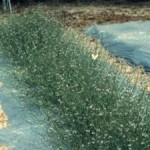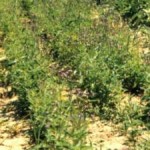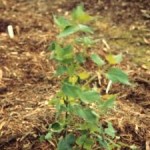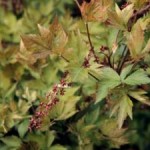Medicinal Herb Research and Yield Estimates
go.ncsu.edu/readext?435598
en Español / em Português
El inglés es el idioma de control de esta página. En la medida en que haya algún conflicto entre la traducción al inglés y la traducción, el inglés prevalece.
Al hacer clic en el enlace de traducción se activa un servicio de traducción gratuito para convertir la página al español. Al igual que con cualquier traducción por Internet, la conversión no es sensible al contexto y puede que no traduzca el texto en su significado original. NC State Extension no garantiza la exactitud del texto traducido. Por favor, tenga en cuenta que algunas aplicaciones y/o servicios pueden no funcionar como se espera cuando se traducen.
Português
Inglês é o idioma de controle desta página. Na medida que haja algum conflito entre o texto original em Inglês e a tradução, o Inglês prevalece.
Ao clicar no link de tradução, um serviço gratuito de tradução será ativado para converter a página para o Português. Como em qualquer tradução pela internet, a conversão não é sensivel ao contexto e pode não ocorrer a tradução para o significado orginal. O serviço de Extensão da Carolina do Norte (NC State Extension) não garante a exatidão do texto traduzido. Por favor, observe que algumas funções ou serviços podem não funcionar como esperado após a tradução.
English
English is the controlling language of this page. To the extent there is any conflict between the English text and the translation, English controls.
Clicking on the translation link activates a free translation service to convert the page to Spanish. As with any Internet translation, the conversion is not context-sensitive and may not translate the text to its original meaning. NC State Extension does not guarantee the accuracy of the translated text. Please note that some applications and/or services may not function as expected when translated.
Collapse ▲3/11/2025 – Reviewed by Jeanine Davis, NC Alternative Crops and Organics Program, Department of Horticultural Science, NC State University.
This report is from studies conducted in 2000-2002 and remains here for reference.
Studies have been conducted at six research stations in North Carolina to develop commercial production systems for medicinal herbs with potential economic value for North Carolina growers. We offer here some of the information gained from these studies. Please keep in mind that this is preliminary information and these are not recommendations. Yields are estimates from research plots and gross returns are based on prices found on-line at the site given. Some plants have not been established long enough to obtain yield data.
Estimated yields per acre are based on 109-4 x 100 ft beds/acre. Yield ranges may include 1-3 rows/bed.
Estimated gross returns are based on a list of medicinal herb prices provided by a U.S. manufacturer in fall, 2002. These are subject to change at any time.
|
Common Name: American Spikenard Botanical Name: Aralia racemosa L. Spikenard (Aralia racemosa) grows 1-10 feet tall and bears elongated flower stalks covered with yellow-green flowers which develop into purple berries. It grows in rich woods and riverbanks and is easy to cultivate. The roots are traditionally harvested in the fall and used to treat many ailments, including backaches. |
|
|
Common Name: Arnica Botanical Name: Arnica chamissonis Arnica flowers, leaves, and roots are used to make healing ointments to relieve pain and inflammation. Arnica is esily cultivated in a n open field setting. Arnica is currently being grown on black plastic, white plastic, and bareground in the upper piedmont of North Carolina and on white plastic in the coastal plains of North Carolina. |
|
|
Common Name: Bloodroot Botanical Name: Sanguinaria canadensis L. Bloodroot is an attractive, low-growing plant with lobed, waxy leaves which puts on pretty white flowers in very early spring. It can often be found growing in deep woods. It spreads naturally by rhizomes and seeds and can be easily propagated by both. The root of the bloodroot, which “bleeds” when cut, has a long been used by Native Americans and has proven antimicrobial activities. It can be toxic, however, and should not be used casually. |
|
|
Common Name: Black Cohosh, Cohosh, Bugbane Botanical Name: Actaea racemosa (L.) Nutt. Black cohosh is a common, but very popular, woman’s herb used in menopause and childbirth. Its immense popularity has caused concern for its well-being and cultivation is encouraged. Fortunately, it is easy to cultivate. It is an attractive shrub, which can grow quite tall, with delicate, lacy-type foliage. It thrives in rich, moist soil in about 80% shade. The roots are harvested in early fall for medicinal use. It can be propagated by dividing the rhizomes in spring or fall. Seed propagation is difficult, but we have a graduate student currently working on this problem. |
|
|
Common Name: Blue Cohosh Botanical Name: Caulophyllum thalictroides (L.) Michx Blue Cohosh is another beautiful plant that is commonly found in hardwood forests in southern Appalachia. The plant grows to about 3 feet in height and early in the year can have very blue foliage. In spring it puts on yellowish-green flowers which develop into a cluster of blue-purple berries. The rhizomes can be divided in spring or fall and the plant will spread naturally. Seeds are difficult and slow to germinate and should be kept moist. Blue cohosh is another woman’s herb, the root of which was traditionally used as a childbirth aid. It is easy to grow but the market is small. |
|
|
Common Name: Oriental Burdock Botanical Name: Arctium lappa Variety: Takinogawa long Yield: 6-17 lbs/100 ft row – 654-1853 lbs/acre Dried root returns: $1,177.20 – 3,335 40/acre Direct seeding worked well. Big healthy plants |
|
|
Common Name: Dandelion Botanical Name: Taraxacum officinale Yields: 7-41 lbs/100 ft row (763-4469 lbs/acre) Dried roots Returns: $1,716.75 – 10,055.25/acre root Excellent growth at higher elevation, foliage upright and full. Did poorly at lower elevation; poor germination and plants were creeping and sparce. |
|
|
Common Name: Purple Echinacea Botanical Name: Echinacea purpurea Yields: 5-32 lbs/100 ft row (535-3,488 lbs/acre) dried tops Returns: $963.00 – 6,278.40/acre tops Direct seeding into beds worked well. Direct seeding into black plastic mulch produced larger plants than transplanting into plastic. Looks great with good vigor and color. |
|
|
Common Name: Feverfew Botanical Name: Tanacetum (chrysanthemum) parthenium Yield: 7-22 lbs/100 ft row (763-2,398 lbs/are) dried tops Returns: $2,060.10 – 6,474.60/acre Transplanting was more reliable than direct seeding. Compact, dark green bushy plants. |
|
|
Common Name: American Ginseng Botanical Name: Panax quinquefolius L. |
|
|
Common Name: Goldenseal Botanical Name: Hydrastis canadensis L. |
|
|
Common Name: Gotu Kola Botanical Name: Centella asiatica Gotu kola leaves are used fresh and dried. It has many medicinal uses including wound healing. It is also used in Ayurvedic medicine. It is being grown on black plastic in the upper piedmont of North Carolina |
|
|
Common Name: Mayapple Botanical Name: Podophyllum pelatum L. |
|
|
Common Name: Milk Thistle Botanical Name: Silybum marianum Comments: Transplanting into black plastic worked very well. Very vigorous plants. |
|
|
Common Name: Motherwort Botanical Name: Leonurus cardiaca This herb is used to treat heart conditions. Little research has been conducted on it either for uses or production. In 2002 it is being studied on black plastic, white plastic, and bareground in the upper piedmont of North Carolina, and on white plastic in the coastal plains of North Carolina. |
|
|
pinkroot spigelia |
Common Name: Pinkroot spigelia Botanical Name: Spigelia marilandica L. |
|
Common Name: St. Johnswort Botanical Name: Hypericum perforatum Variety: Topas Direct seeding and transplanting worked well. Dark green, upright habit, good color, good vigor. |
|
|
Common Name: St. Johnswort Botanical Name: Hypericum perforatum Variety: Wild Direct seeding and transplanting worked well. Good color, compact plants, low growing creeping habit with good vigor. |
|
|
Common Name: Skullcap Botanical Name: Scutellaria baicalensis Variety Name: Baikal Direct seeding and transplanting worked well. Plants small but healthy with good color. |
|
|
Common Name: Skullcap Botanical Name: Scutellaria lateriflora Yield: 5-15 lbs/100 ft row (545-1,635 lbs/acre) dried tops Returns: $2,583.30 – 7,749.90/acre Skullcap is being studied on black plastic, white plastic, and bareground in the upper piedmont of North Carolina and on white plastic in the coastal plains of North Carolina. |
|
|
Common Name: Spilanthes Botanical Name: Spilanthes spp The entire plant is used. Commonly known as the toothache plant, it is considered an immune system stimulant and has antiparasitic and antibacterial properties. Spilanthes is being studied on black plastic, white plastic, and bareground in the upper piedmont of North Carolina, and on white plastic in the coastal plains of North Carolina. |
|
|
Common Name: Stinging Nettle Botanical Name: Urtica dioicca Yield: 4-12 lbs/100 ft row (436-1,308 lbs/acre) dried tops Returns: $1,177.20 – 3,531.60/acre Spring seeding and transplanting worked well. Big lush plants, good color at lower elevation. More open growth at higher elevation. |
|
|
Common Name: Valerian Botanical Name: Valeriana officinalis Variety: Arterner Zuchtung Yield: No data-1st harvest in 1999 Transplanting worked best. Healthy, dark green but small, some flagging in heat. |
|
|
Common Name: Valerian Botanical Name: Valeriana officinalis Variety: Common Transplanting worked best. Dark green color, big plants. |
|
|
Common Name: Vervain Botanical Name: Verbena officinalis Yield: 3-11 lbs/100 ft row (327-1199 lbs/acre) dried tops Transplanting worked well. Beautiful, dense plants. |
|
|
Common Name: Blue Vervain Botanical Name: Verbena hastata Yield: 9 lbs/100 ft row (981 lbs/acre) dried tops. Returns: $3,433.50-$3,924.00/acre Spring seeding was poor. Fall seeding was good. |
|
|
Common Name: Virginia Snakeroot Botanical Name: Aristolochia serpentaria L. |
|
|
Common Name: Yellowroot Botanical Name: Xanthorhiza simplicissima Marsh |



